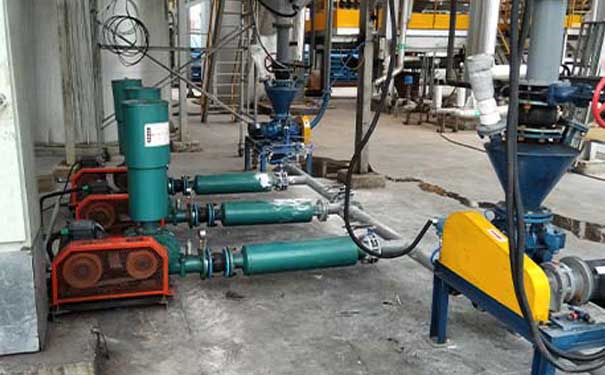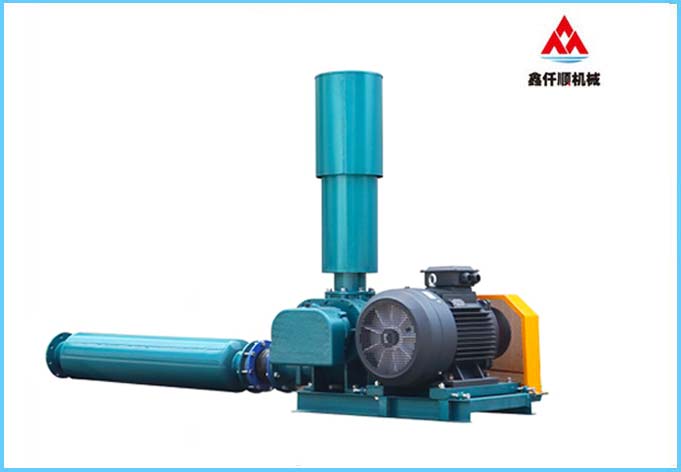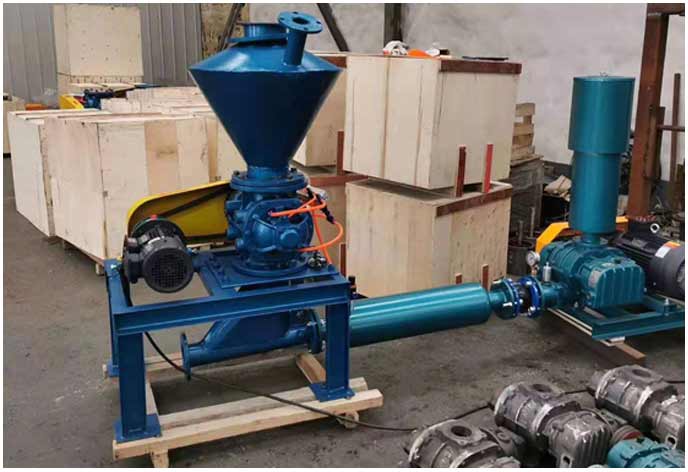Roots blower It is a positive displacement blower, which is widely used because of its advantages of high efficiency, energy saving, simple operation, smooth operation, etc. Roots blower transports wood dust in the particle board factory, which mainly comes from sanding, sawing, paving, particle drying, particle screening and polishing and other processes.
Advantages of Roots blower in particle board factory dust transportation
1. The conveying concentration of Roots blower is much higher than that of centrifugal blower, so the energy consumption is low;
2. Roots blower has longer conveying distance and smaller installation space;
3. Under the same transportation capacity, the diameter of Roots blower pipe is far smaller than that of centrifugal blower pipe, so the cost of pipe and support civil engineering is small, and the initial investment is small;
4. Under the same amount of dust transportation, Roots blower needs smaller tail gas dust remover and less equipment investment;
5. Low maintenance cost of Roots blower.

Conveying system of Roots blower Sound insulation room and silencer: Roots blower is noisy, so it is necessary to install the main part of Roots blower in the sound insulation room, and install a silencer at the outlet of Roots blower to reduce its operating noise. The sound insulation room is mainly composed of sound insulation plate, sound insulation door, sound insulation window, air vent, silencer, etc., which can not only make sound insulation but also meet the requirements for the intake of Roots blower to absorb relatively clean air, so as to extend the service life of the air filter at the blower inlet.
Rotary feeder: The rotary feeder is installed between the dust spiral outlet at the bottom of the bag type dust collector and the acceleration chamber. It is required to have good sealing performance and wear resistance. Its blades and shells need to be finished with a matching clearance of ≤ 0.1mm. The inner walls of the blades and shells are made of stainless steel or other wear resistant materials. The rotary feeder unloads the dust spirally conveyed to the acceleration chamber, and at the same time, closes some air flow flowing up from the acceleration chamber to prevent the air leakage of the high-pressure pipeline, which affects the conveying efficiency and energy consumption, and can ensure the smooth discharge of dust.
Acceleration chamber: the acceleration chamber is a key part of the Roots blower dust conveying system. Its upper end is connected to the outlet of the rotary feeder, and its horizontal ends are connected to the high-pressure pipes. There are strict requirements for the angle of the chute at the blanking port of the acceleration chamber and the sectional area of the main pipe. The angle range of the chute at the blanking port of the acceleration chamber is 50 degrees ≤ ∠ 1 ≤ 90 degrees. If the fabrication and installation space allows, the larger the angle of the chute at the blanking port of the acceleration chamber is ∠ 1, the better (the maximum is not more than 90 degrees), to ensure that the dust is easier to slide into the positive pressure pipeline. The cross-sectional area S2 of the main pipe at the bottom of the blanking port of the acceleration chamber ≤ the cross-sectional area S1 of the main pipe. When the high-speed air flow in the pipe passes through, the reverse channeling of the positive pressure air flow in the pipe will be greatly reduced at S2, making it easier for dust to enter the positive pressure pipe. The fabrication of the accelerated indoor wall needs to be polished smooth without burrs and dead corners, so as to ensure the smooth flow direction of the wind speed in the pipe, avoid turbulence in the area of the blanking port and move upward, reduce the loss of the conveying air volume, and thus reduce energy consumption and operating costs.

Fabrication of duct elbows: duct elbows conveying high concentration dust have high resistance and wear quickly. They need to be made of 16Mn or stainless steel materials that are relatively wear-resistant and easy to process. The wall thickness of the elbow can also be increased appropriately. The turning radius of the elbow R ≥ 2 times the diameter d of the duct. Under the conditions of manufacturing and installation, the turning radius should be increased appropriately to reduce the transmission resistance and improve the transmission efficiency, Extend the service life of the elbow. The fabrication of inspection doors: because the distance between the transportation of high concentration dust and the far air duct turns more, the pipeline may be blocked occasionally due to instantaneous power failure or other reasons, so a certain number of inspection doors need to be arranged at the straight pipe and elbow, so that the blockage can be dredged section by section. The location distribution principle of the inspection door is at least one for every 6m long straight pipe and one for every 90 degree elbow. The manufacturing of the inspection door must ensure that the inner wall is smooth and smooth, the sealing is good, and it is easy to open and close quickly.
Check valve: a fireproof check valve needs to be designed and installed between the air duct conveying end and the bag type dust collector. The check valve automatically opens when the Roots blower starts to run. When the end bag type dust collector has a fire, the check valve will automatically close due to its own weight after the Roots blower stops, isolating the end dust collector and the conveying pipeline, Ensure that the fire source will not spread to the wind side along the high-pressure transmission pipeline.
Automatic spark detection and fire extinguishing: because the dust transported by Roots blower is of high concentration and long distance, and the dust is flammable and explosive materials, the design and installation of automatic spark detection and fire extinguishing system is particularly important. At least one set of automatic spark detection and fire extinguishing system shall be installed at the beginning and end of the pipeline respectively, so that the fire can be found and extinguished automatically in the first time. Dust fires are flammable and difficult to extinguish, fire water is difficult to drench, dust floating on the water can still continue to burn, and combustion after high concentration suspension will also lead to huge explosion hazards, so fire prevention investment in design is essential. Roots blower is used for conveying dust in particle board factory, which not only ensures the cleanness of the factory, but also saves the cost of additional dust control.











